
The Ultimate Guide to SEO for Small Businesses: A 12-Month Growth Roadmap
Search Engine Optimization (SEO) is vital for digital visibility. For small businesses, it’s the most cost-effective way to compete, attract consistent traffic, and build online authority. Unlike paid ads, SEO compounds over time, creating a lasting asset. In fact, 93% of online experiences begin with a search engine (99firms).
This guide covers the full spectrum of SEO, from audits and technical foundations to content, local optimization, authority building, analytics, and long-term strategy. It provides an actionable roadmap for sustainable search visibility, with links to related pillar pages like Local SEO and Ecommerce Marketing. This guide doesn’t just cover SEO basics; it introduces two proprietary frameworks, the 12-Month Growth Roadmap and the SEO Investment Matrix, explicitly designed for small businesses to cut through noise and prioritize what actually drives growth.
Quick Navigation
Laying the Groundwork: SEO Audits – Your Business's Digital Health Check
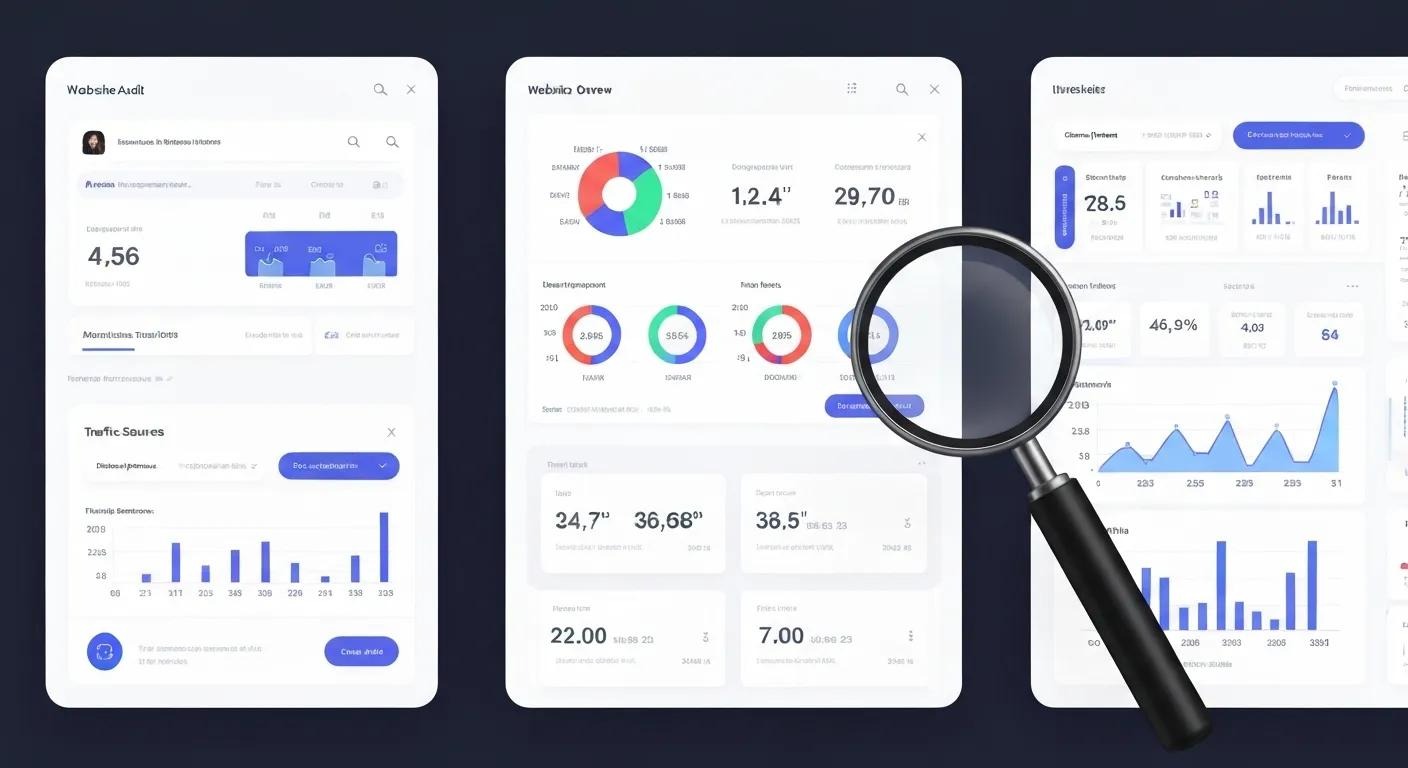
Before improving search rankings, understand your website’s current standing. An SEO audit is a comprehensive health check, identifying strengths, weaknesses, and opportunities. For small businesses, this is crucial for allocating limited resources effectively and maximizing marketing ROI.
Only 23% of websites rank in Google’s top three results (Fit Small Business), making audits essential for identifying gaps. A thorough audit is the first step in any successful SEO strategy, preventing wasted effort on ineffective tactics.
“Expert Insight “For small businesses, SEO isn’t just about ranking higher; it’s about building a sustainable digital presence that attracts qualified leads and fosters long-term growth. It’s the most powerful way to level the playing field against larger competitors.” – Jorge Leger, Founder and Digital Marketing Consultant, Astound Media
What an SEO Audit Entails: A Three-Pronged Approach
1) Baseline Assessment
Crawl your site to understand how search engines see it, check indexation, and evaluate Core Web Vitals. Use tools like Google Search Console, Screaming Frog, or SEMrush. For a local bakery, this means ensuring their online ordering page is crawlable and product images load quickly.
Step-by-Step
- Crawl Your Site: Use Screaming Frog or SEMrush Site Audit.
- Check Indexation: Use Google Search Console’s Pages report.
- Evaluate Core Web Vitals: Use Google PageSpeed Insights.
- Identify Technical Errors: Look for broken links, redirect chains, missing tags, and duplicate content.
Common Mistakes to Avoid
- Ignoring mobile usability
- Overlooking crawl errors
- Not checking HTTPS implementation
2) On-Page Review
Examine title tags, header tags, meta descriptions, and schema markup. These tell search engines what your page is about. For a plumber, clear title tags like “Emergency Plumbing Services in [City Name]” are vital.
Step-by-Step
- Title Tags: Ensure unique, descriptive tags (under 60 chars) with primary keywords.
- Meta Descriptions: Craft compelling descriptions (under 160 chars) to encourage clicks.
- Header Tags (H1–H6): Use a single H1 for the main topic, followed by H2s and H3s for structure.
- Schema Markup: Implement relevant schema (e.g., LocalBusiness, Product) for rich snippets.
Common Mistakes to Avoid
- Keyword stuffing
- Duplicate tags/descriptions
- Missing H1 tags
3) Content Health Check
Identify thin, duplicate, or outdated content. Thin content offers little value, duplicate content confuses search engines, and obsolete content contains errors. A small e-commerce shop with similar product descriptions dilutes SEO efforts.
Step-by-Step
- Identify Thin Content: Look for pages with under 300 words lacking substantial value.
- Detect Duplicate Content: Use Copyscape or Google Search Console.
- Assess Content Freshness: Review older posts for outdated stats or relevance.
- Plan for Improvement: Expand thin content, consolidate duplicate content, or update/retire outdated pages.
Common Mistakes to Avoid
- Deleting content without redirects
- Not considering user intent
- Ignoring content quality
The Content Decay Framework

Content decay occurs when content loses ranking power due to fresher competition, outdated information, or shifting search intent. This framework helps proactively combat this decline.
Case Study: A Local HVAC Company
An HVAC company’s blog post, “Top 5 Ways to Prepare Your Home for Winter,” initially ranked well. By late 2023, rankings slipped as competitors updated their posts with newer tips, and search intent evolved to include smart thermostats and energy efficiency.
Identify Decay
Use GA4 or GSC to spot declining traffic/impressions over 6–12 months. For the HVAC company, GSC showed a 30% drop in impressions for their winter prep article.
Actionable Steps
- Monitor Performance: Check GA4 for declining traffic and GSC for falling impressions/positions.
- Analyze Search Intent: Review current top-ranking pages for target keywords.
- Benchmark Against Competitors: See what competitors are doing in their updated content.
Refresh Strategy
Update statistics, expand content depth, add internal links, and adjust for current search intent. The HVAC article, refreshed to over 2,500 words with new sections on smart thermostats and air sealing, saw a 20% traffic increase within two months. Long-form content (3,000+ words) earns 3.5× more backlinks (TechJury).
Actionable Steps
- Update Data: Replace outdated statistics.
- Add New Sections: Incorporate emerging trends or detailed information.
- Enhance Readability: Use bullet points, subheadings, and visuals.
- Incorporate Internal Links: Connect to other relevant site content.
- Optimize for Current Intent: Ensure content meets current user needs.
Retire or Redirect
For irrecoverable pages, implement 301 redirects to stronger content. This prevents lost link equity and guides users.
Actionable Steps
- Identify Irrelevant Pages: Determine which pages offer no value and cannot be salvaged.
- Find a Suitable Target Page: Choose the most relevant existing page.
- Implement 301 Redirects: Use your .htaccess file or a plugin.
- Verify Redirects: Test old URLs to ensure they redirect correctly.
Common Mistakes to Avoid
- Failing to monitor content performance
- Making superficial updates
- Not considering search intent shifts
- Deleting pages without redirects
Key Takeaway Regular SEO audits and refresh cycles protect SMBs from losing rankings, turning content decay into a growth opportunity.
Technical SEO Essentials: Building a Strong Foundation

Technical SEO ensures search engines can easily crawl, understand, and index your site. It’s the essential plumbing and electrical wiring for your website, providing a better user experience and improving search rankings.
While many guides stop at listing technical fixes, this roadmap integrates them into a growth sequence that prioritizes what matters most for SMBs.
Site Speed & Core Web Vitals
Slow sites drive users away. Google measures speed and user experience with Core Web Vitals (LCP, FID, CLS). A one-second delay can reduce conversions by 7% (HubSpot). Optimizing images, leveraging browser caching, and minimizing code significantly improve speed.
Common Mistakes to Avoid
- Ignoring mobile speed
- Overloading pages with large media
- Not implementing caching effectively
Case Study: E-commerce Store
An online boutique struggled with slow page load times, which negatively impacted conversions. After implementing image compression, browser caching, and upgrading hosting, their average page load time dropped from 5 to 1.8 seconds, resulting in a 15% conversion increase.
Step-by-Step
- Test Your Speed: Use Google PageSpeed Insights or GTmetrix.
- Optimize Images: Compress images and use modern formats like WebP.
- Leverage Browser Caching: Conp your server to store static files.
- Minify Code: Remove unnecessary characters from CSS, JavaScript, and HTML.
- Use a CDN: Distribute content across global servers.
- Upgrade Hosting: Consider a more robust plan if needed.
Mobile-First Indexing
Today, 61% of Google searches happen on mobile (Statista). Google primarily uses the mobile version of your content for indexing and ranking. A responsive design is non-negotiable.
Common Mistakes to Avoid
- Using separate mobile URLs
- Blocking CSS/JavaScript for mobile
- Making text too small or buttons too close on mobile
Step-by-Step
- Ensure Responsive Design: Your website should adapt to any screen size.
- Test Mobile Usability: Use Google’s Mobile-Friendly Test tool.
- Optimize Mobile Navigation: Make menus and buttons easy to tap.
- Prioritize Mobile Content: Ensure essential content and functionality are present.
- Check Mobile Speed: Crucial for users on slower connections.
Crawlability
Use XML sitemaps, robots.txt, and canonical tags to guide search engines. An XML sitemap acts as a roadmap; robots.txt blocks certain pages; canonical tags prevent duplicate content issues
Common Mistakes to Avoid
- Blocking important pages in robots.txt
- Incorrect canonical tags
- Not submitting an XML sitemap
Case Study: SaaS Company
A SaaS company improved its indexation rate by 40% and rankings by implementing correct canonical tags on product variations and using robots.txt to exclude internal search results, resolving duplicate content issues.
Step-by-Step
- Create an XML Sitemap by using CMS plugins and then submit it to Google Search Console.
- Conp robots.txt: Block unimportant pages, but be cautious.
- Implement Canonical Tags: Use for preferred page versions.
- Check for Crawl Blockers: Ensure no JavaScript or robots.txt directives are blocking essential pages.
Structured Data / Schema
Enhances rich results like reviews, FAQs, or events. Schema markup helps search engines understand content context. For a local provider, the FAQ schema can lead to answers appearing directly in search results, increasing visibility. Schema can increase organic CTR by up to 30% (Moz).
Common Mistakes to Avoid
- Implementing a schema for mismatched content
- Incorrect JSON-LD code
- Failing to test implementation
Step-by-Step
- Identify Relevant Schema Types: Determine content types (e.g., LocalBusiness, Product, FAQ Page).
- Use Schema Generators: Tools like Google’s Structured Data Markup Helper can assist.
- Implement the Code: Add the generated JSON-LD script to your page’s or .
- Test Your Implementation: Use Google’s Rich Results Test tool.
Key Takeaway Technical SEO is the foundation for all other optimization efforts, making your site accessible and understandable to search engines and users.
Content Strategy for SEO: Creating Value That Ranks
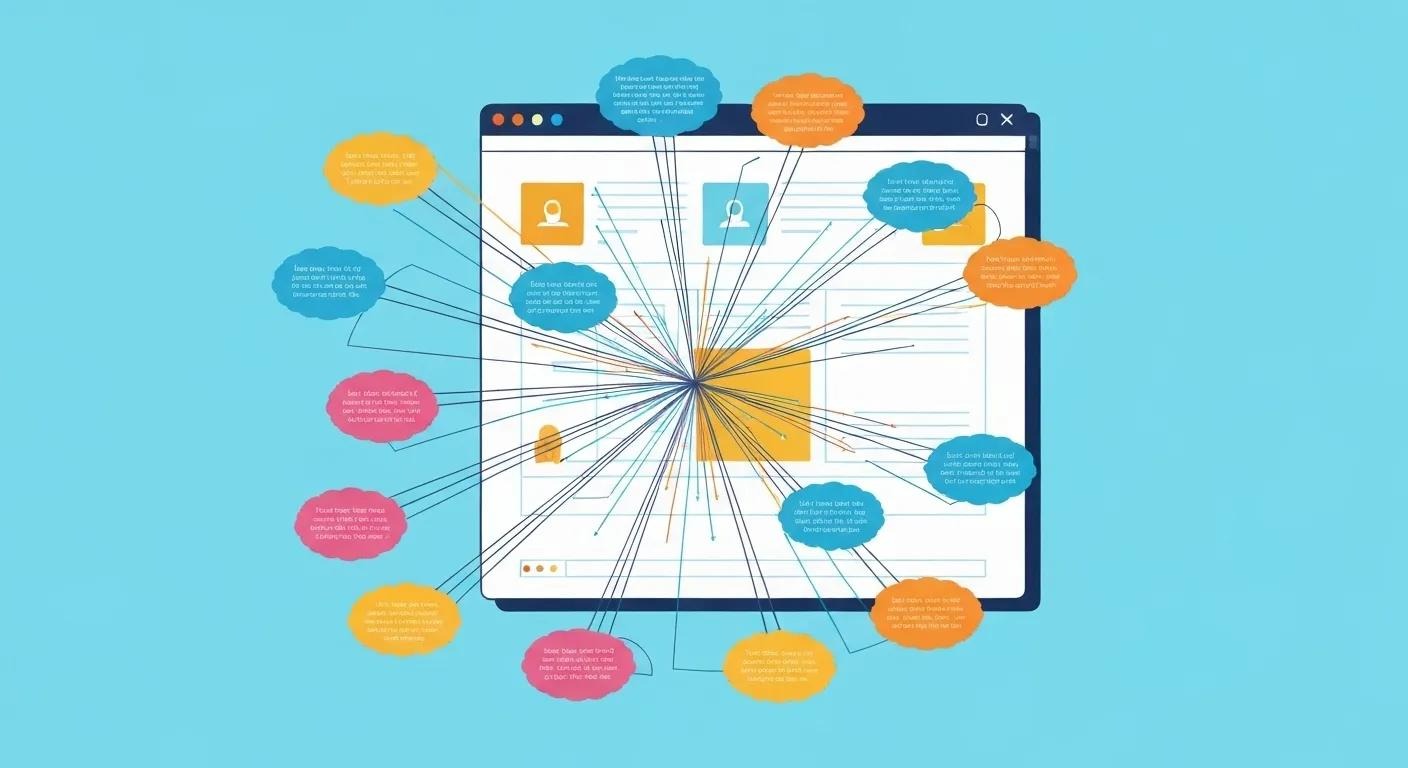
Content drives authority and traffic, but it must be strategic. High-quality, relevant content attracts users and signals to search engines that your site is a valuable resource.
Keyword Research
Balance competitive, high-volume terms with long-tail opportunities. Long-tail keywords are more specific, have lower volume, but often indicate stronger user intent and are easier to rank for.
Case Study: HVAC Company
An HVAC company shifted from broad terms like “air conditioning repair” to long-tail terms like “emergency AC repair [city name] no heat.” This attracted highly qualified leads, significantly improving their conversion rate.
Step-by-Step
- Brainstorm Seed Keywords: List core topics related to your business.
- Use Keyword Research Tools: Employ tools like Google Keyword Planner, SEMrush, or Ahrefs.
- Analyze Competitors: See what keywords they rank for.
- Identify Long-Tail Keywords: Look for longer, specific phrases with high intent.
- Understand Search Intent: Categorize keywords by intent (informational, transactional, etc.).
- Prioritize Keywords: Select keywords that align with business goals and are achievable in terms of authority.
Common Mistakes to Avoid
- Focusing only on high-volume keywords
- Not understanding search intent
- Ignoring keyword difficulty
Content Hubs
Build pillar pages supported by cluster articles. A pillar page is a comprehensive guide on a broad topic; cluster articles delve into specific subtopics. This structure signals topical authority (Backlinko) and aids user navigation.
Example: A Financial Advisor
- Pillar Page: The Complete Guide to Retirement Planning for Small Business Owners
- Cluster Articles:
- Understanding SEP IRAs vs. Solo 401(k)s
- Tax-Efficient Strategies for Business Owners Nearing Retirement
- How to Value Your Business for Retirement Sale
- Estate Planning Essentials for Entrepreneurs
Step-by-Step
- Identify Core Topics: Choose broad subjects central to your business.
- Create a Pillar Page: Develop a comprehensive guide.
- Develop Cluster Content: Create articles diving into subtopics.
- Interlink Strategically: Link the pillar to clusters and clusters to each other.
- Promote Your Hub: Share across your channels.
Common Mistakes to Avoid
- Poor internal linking
- Lack of depth in pillar pages
- Failing to cover the topic comprehensively
Content Formats
Mix in-depth guides, checklists, FAQs, comparisons, and case studies. Different users prefer different formats. A small consulting firm might create a downloadable checklist and a detailed case study.
Step-by-Step
- Understand Your Audience: Consider their preferences and needs.
- Map Formats to Intent: Use guides for broad topics, checklists for actions, case studies for proof.
- Repurpose Content: Turn blog posts into infographics, webinars into articles.
- Optimize for Each Format: Ensure design and readability.
Common Mistakes to Avoid
- Sticking to only one format
- Creating content that doesn’t match the format’s strengths
- Not promoting different formats effectively
Refresh Cycles
Revisit content every 6–12 months to maintain competitiveness. Update statistics, add new insights, and ensure alignment with current search intent.
Step-by-Step
- Schedule Regular Reviews: Quarterly or biannually.
- Prioritize High-Impact Content: Pages driving traffic or conversions.
- Follow the Content Decay Framework: Identify, refresh, or retire/redirect.
- Track Changes: Note updates and monitor impact.
Common Mistakes to Avoid
- Treating content as “set it and forget it”
- Only refreshing when rankings drop
- Making superficial updates
SEO leads convert at 14.6%, outperforming traditional channels (99firms). This highlights the importance of attracting the right traffic through valuable content.
Key Takeaway Treat content as a renewable asset that compounds in value, providing ongoing value to users and search engines. Strategic content creation and maintenance are crucial for long-term SEO success.
Local SEO: Winning in Nearby Markets

46% of all Google searches have local intent (Search Engine Journal). For SMBs with local service areas or storefronts, this is a huge opportunity. Local SEO optimizes your online presence to attract these local customers.
Google Business Profile (GBP)
Ensure NAP (Name, Address, Phone) is accurate and consistent. This is the most critical factor for local SEO. Encourage reviews, as 81% of consumers use Google Reviews to evaluate local businesses (BrightLocal). Post updates, photos, and respond to Q&As.
Case Study: Local Bakery
A bakery optimized its GBP by ensuring NAP consistency, posting daily photos and weekly specials, and actively encouraging/responding to reviews. This led to a 50% increase in direction requests and a 30% increase in calls within three months.
Step-by-Step
- Claim & Verify Your Profile: Ensure ownership.
- Complete All Sections: Fill out every field accurately.
- Optimize Your Description: Use relevant keywords naturally.
- Upload High-Quality Photos/Videos: Showcase your business.
- Encourage Reviews: Ask satisfied customers to leave feedback.
- Respond to Reviews: Engage professionally with all feedback.
- Utilize GBP Posts: Share updates, offers, and events.
- Answer Q&As: Monitor and respond to user questions.
Common Mistakes to Avoid
- Inconsistent NAP information
- Not responding to reviews
- Outdated business hours
- Ignoring Q&A
Local Citations
NAP consistency across directories (Yelp, Yellow Pages) boosts trust. 64% of SMBs invest in local SEO (SeoProfy). Ensure your business is listed accurately everywhere.
Step-by-Step
- Identify Key Directories: Major and industry-specific directories.
- Audit Existing Citations: Use Moz Local or BrightLocal.
- Ensure NAP Consistency: EXACT matches.
- Build New Citations: Submit to relevant, reputable directories.
- Clean Up Inconsistencies: Correct outdated info.
Common Mistakes to Avoid
- Inconsistent NAP
- Listing on irrelevant/low-quality directories
- Failing to update citations after changes
Customer Reviews
Respond to every review. Positive reviews act as social proof; negative reviews offer a chance to demonstrate customer service.
Step-by-Step
- Monitor Review Platforms: Google, Yelp, Facebook, etc.
- Respond Promptly: Aim for 24–48 hours.
- Personalize Responses: Address by name.
- Thank Positive Reviewers: Acknowledge feedback.
- Address Negative Reviews Professionally: Acknowledge, apologize if needed, take offline if appropriate, and state corrective actions.
- Encourage More Reviews: Make it easy for happy customers to leave feedback.
Common Mistakes to Avoid
- Ignoring negative reviews
- Using generic responses
- Getting defensive
- Buying fake reviews
Location Pages
Create optimized pages for each service area. If a plumbing company serves multiple towns, they need dedicated pages (e.g., “Plumbing Services in [Town A]”). These pages should include location-specific keywords and testimonials. “‘Near me’ mobile searches have surged 500–900%” (Google/Think with Google).
Case Study: HVAC Company (Continued)
An HVAC company created dedicated landing pages for five key towns, including local keywords, testimonials, and region-specific issues. This resulted in increased organic traffic and leads from those specific towns.
Step-by-Step
- Identify Service Areas: List all towns/neighborhoods served.
- Create Dedicated Pages: Build a unique page for each location.
- Optimize with Local Keywords: Include city/region names naturally.
- Include Location-Specific Content: Mention landmarks or local needs.
- Embed a Map: Show your service area or location.
- Add Local Testimonials: Reviews from that area.
- Ensure NAP is Prominent: Clear contact information.
Common Mistakes to Avoid
- Creating duplicate content pages (only city name changes)
- Not including unique, valuable content per location
- Failing to link these pages from the navigation or service pages
Key Takeaway For SMBs, local SEO is fundamental for visibility where it matters most, connecting you with customers in your geographic area.
Authority Building: Backlinks & E-E-A-T
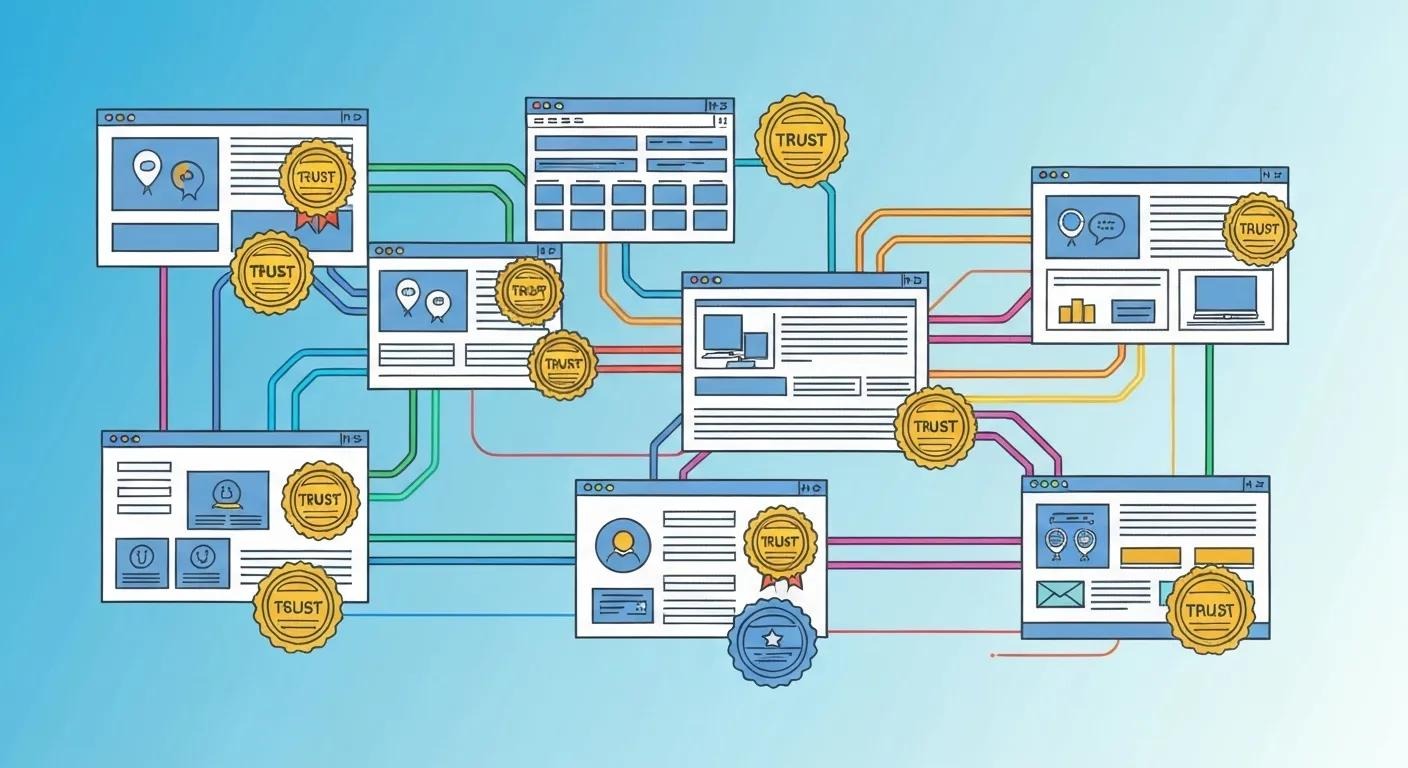
Search engines rank trusted websites. Authority is built through high-quality backlinks, a strong online reputation, and demonstrating Expertise, Experience, Authoritativeness, and Trustworthiness (E-E-A-T).
Backlinks
Links from other websites act as “votes of confidence.” Guest posts, strategic partnerships, and media mentions drive high-quality backlinks. Backlinko’s research shows backlinks remain a top Google ranking factor.
Case Study: Small Accounting Firm
An accounting firm created an in-depth guide on tax deductions for freelancers and secured guest posts on two reputable finance blogs and a feature in a local business journal. This resulted in 5 high-quality backlinks, boosting their domain authority and rankings.
Step-by-Step
- Identify Linkable Assets: Create content others want to link to.
- Guest Blogging: Write for reputable industry sites.
- Broken Link Building: Suggest your content as a replacement.
- Digital PR: Earn media mentions with newsworthy information.
- Partnerships: Collaborate with complementary businesses.
- Resource Pages: Submit your content to relevant resource lists.
Common Mistakes to Avoid
- Buying links
- Getting links from irrelevant/low-quality sites
- Focusing on quantity over quality
- Excessive exact-match anchor text
E-E-A-T
Google’s guidelines emphasize these factors, especially for YMYL topics. Highlight credentials, showcase testimonials/case studies, ensure site security (HTTPS), and display contact information clearly.
Example: Health & Wellness Coach
A health coach improved E-E-A-T signals by:
- Creating detailed author bios for themselves and guest writers (e.g., certifications such as Certified Health Coach, Nutritionist)
- Featuring client testimonials with results
- Ensuring HTTPS and a clear privacy policy
- Publishing expert-level content citing reputable studies
Step-by-Step
- Showcase Experience: Years, projects, results.
- Demonstrate Expertise: Certifications, awards, affiliations.
- Build Authoritativeness: Reputable backlinks and mentions.
- Ensure Trustworthiness: HTTPS, clear contact info, privacy policy, testimonials.
- Author Bios: Include detailed bios on blog posts.
Common Mistakes to Avoid
- Lack of transparency
Poor website security
Failing to showcase credentials
Anonymous authors on critical content
Digital PR & Thought Leadership
Getting featured in reputable publications or participating in industry events boosts authority signals. This positions your business as a leader.
Step-by-Step
- Identify Target Publications/Platforms: Industry blogs, news sites, podcasts, events.
- Develop Your Angle: Unique insights or newsworthy story.
- Craft Pitches: Personalize outreach to journalists/editors/hosts.
- Offer Expertise: Be available for commentary on trends.
- Participate in Events: Speak at conferences/webinars.
- Publish Original Research: Conduct surveys and share findings.
Common Mistakes to Avoid
- Generic outreach
- No clear angle
- Misaligned audience fit
- Expecting immediate results
Key Takeaway Authority signals, backlinks, and demonstrated E-E-A-T separate top-ranking sites from others, signaling to search engines that your site is a reliable one.
The SEO Investment Matrix (2x2)

This framework helps prioritize SEO efforts by evaluating tasks based on potential impact and required resources, ensuring focus on high-ROI activities. Unlike generic lists of SEO tips, this matrix helps small businesses decide what to do first, what to plan for the long term, and what to ignore entirely, saving both time and budget.
Quadrants & Priorities
| Quadrant | Priority Level | Description | Examples for SMBs |
|---|---|---|---|
| High Impact, Short Term (Quick Wins) | Highest Priority | Tasks implemented quickly, yielding significant, immediate SEO results | – Fixing broken links- Optimizing title tags/meta descriptions- Implementing basic schema (LocalBusiness, FAQ)- Improving page speed (image compression, caching)- Ensuring NAP consistency across directories- Claiming & optimizing Google Business Profile |
| High Impact, Long Term (Strategic Investments) | Sustained Focus | Sustained efforts yielding substantial, compounding results over time. | – Building evergreen content hubs (pillar + clusters)- Consistent, quality link building (guest posting, outreach)- Developing strong topical authority- Ongoing technical SEO maintenance & monitoring- E-E-A-T enhancement (expert content, testimonials)- Developing location-specific service pages |
| Low Impact, Short Term (Distractions) | Low Priority / Avoid | Tasks that require effort but yield minimal SEO benefit. | – Over-optimizing minor pages with exact-match keywords- Chasing niche, low-traffic keywords with no clear intent- Minor design tweaks with no UX/SEO benefit- Focusing solely on social shares as a ranking factor |
| Low Impact, Long Term (Resource Drain) | Avoid / Re-evaluate | Activities that consume resources without proportional results. | – Building links from irrelevant/low-quality directories- Creating content with no audience/search demand- Excessive focus on vanity metrics- Implementing complex features with no clear benefit |
This matrix can be revisited every quarter to re-prioritize SEO investments as your business grows.
How to Use the Matrix
- List Tasks: Brainstorm all potential SEO activities.
- Assess Impact & Effort: Estimate SEO impact (High/Low) and resource needs (Short/Long Term).
- Categorize: Place tasks into the appropriate quadrant.
- Prioritize: Focus on High-Impact quadrants; minimize or avoid Low-Impact ones.
Case Study: Small E-commerce Store
An e-commerce store selling handmade soaps used the matrix:
- High Impact, Short Term: Optimized product titles/descriptions, fixed broken links, ensured GBP accuracy.
- High Impact, Long Term: Committed to creating engaging blog content on natural skincare and building backlinks through partnerships with beauty bloggers.
- Low Impact, Short Term: Avoided minor design tweaks.
- Low Impact, Long Term: Avoided submitting to low-quality directories.
By focusing on high-impact quadrants, they saw significant improvements in traffic and sales within six months.
Key Takeaway SMBs maximize ROI by balancing quick wins with strategic long-term investments, while actively avoiding low-impact activities.
SEO vs. Paid Ads: Understanding Compounding ROI
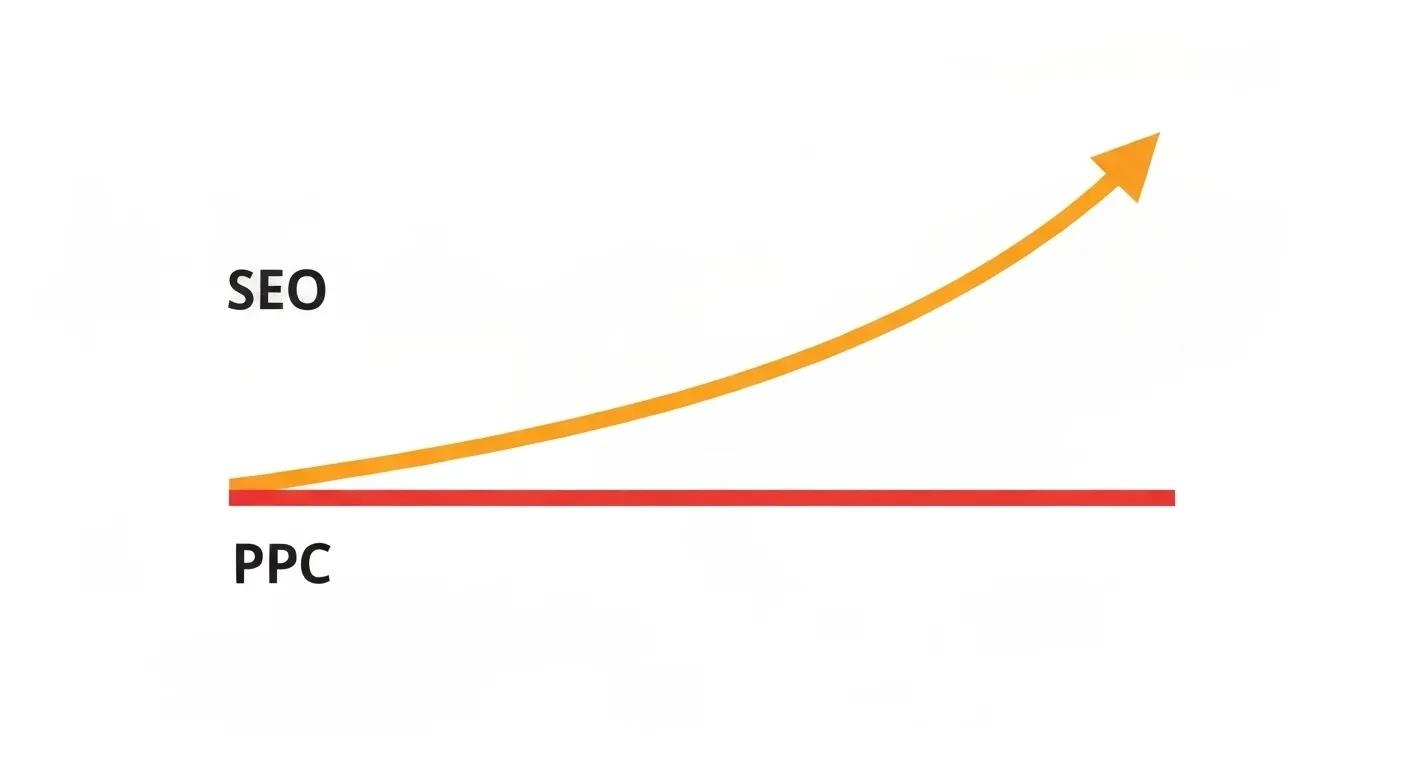
Both SEO and paid advertising (PPC) have their place, but their ROI and sustainability differ fundamentally. Understanding these distinctions is crucial for effective budget allocation.
Paid ads offer immediate visibility but disappear when you stop paying. They’re great for short-term campaigns, but they can quickly escalate costs. Your traffic is always dependent on your budget.
SEO builds an asset. It requires upfront and ongoing investment, but results compound over time. As your website gains authority, it attracts traffic without direct per-click costs, building brand authority and trust. It’s a sustainable, long-term strategy.
- SMBs spend 7× more on PPC than SEO (Sagapixel), often reflecting a short-term focus.
- SEO ROI is 25% higher than PPC (Sagapixel) due to compounding, “free” traffic, and a growing asset.
- Top organic results capture 27.6% of clicks (Backlinko), demonstrating significant traffic potential.
Detailed Comparison (Feature-by-Feature)
- Cost Structure
- SEO: Upfront/ongoing investment; no direct cost per click.
- PPC: Pay per click/impression; ongoing costs tied to traffic.
- Speed of Results
- SEO: Slow to moderate (weeks to months).
- PPC: Immediate.
- Sustainability
- SEO: High; builds a long-term asset.
- PPC: Low; traffic stops when spending stops.
- Traffic Quality
- SEO: Often higher intent, more qualified.
- PPC: Can be high, but it depends on targeting; it can attract less qualified clicks.
- ROI Potential
- SEO: Very high long-term due to compounding.
- PPC: Good short-term; often lower long-term ROI.
- Brand Building
- SEO: Excellent; builds authority and trust.
- PPC: Moderate; increases awareness but lacks organic trust.
- Predictability
- SEO: Less predictable in the short term, more stable in the long term.
- PPC: Highly predictable traffic volume based on budget.
Case Study: Local Bakery (Continued)
A bakery could use Google Ads for “birthday cakes [city name]” for immediate orders. However, investing in SEO content like “How to Choose the Perfect Wedding Cake” builds authority, attracting users planning future events. This leads to long-term relationships and sustainable traffic without constant ad spend.
Key Takeaway Paid ads are a faucet. SEO is a flywheel. SMBs investing steadily in SEO see compounding returns, building a sustainable source of qualified traffic. A balanced approach often uses paid ads for immediate needs while investing in SEO for long-term growth.
Conversion Rate Optimization (CRO): Turning Traffic into Sales
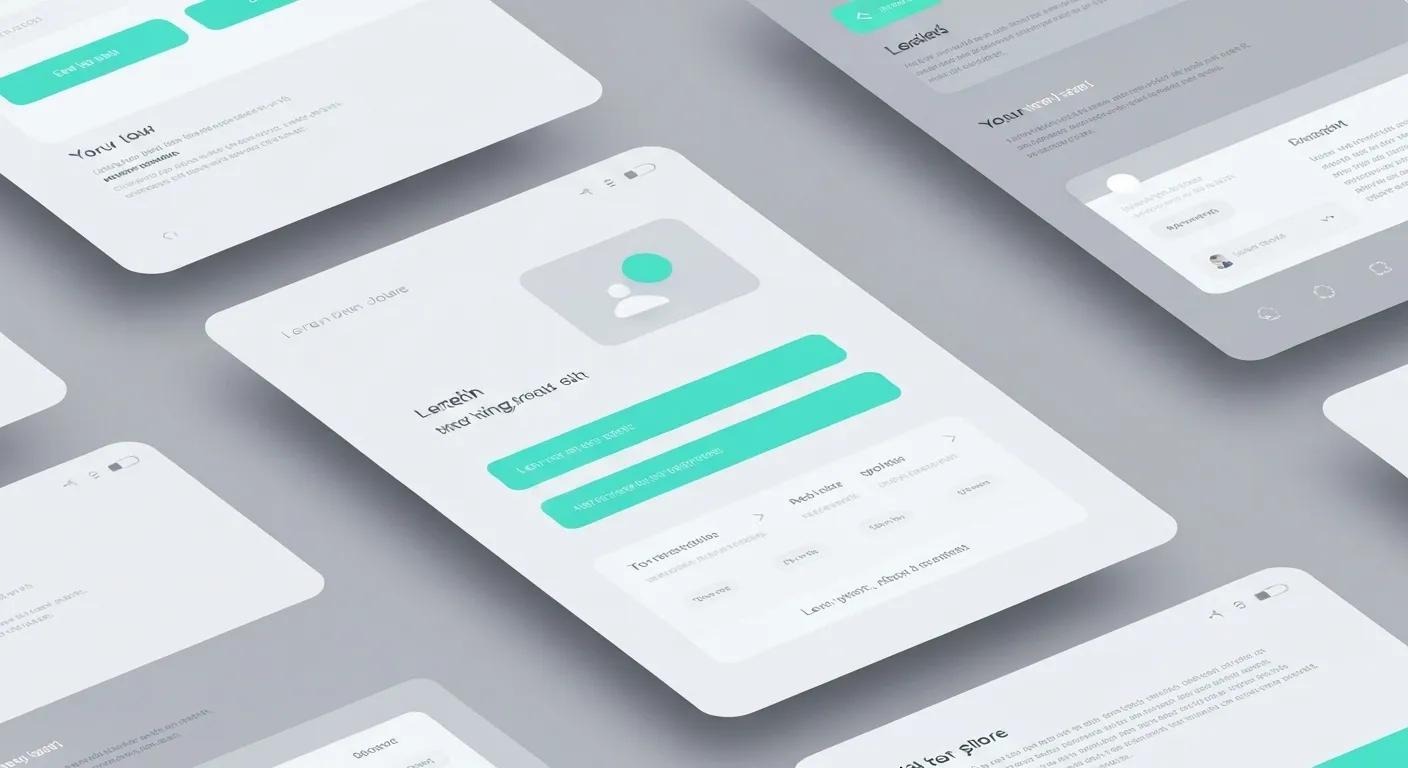
Attracting traffic is only half the job. CRO improves your website to increase the percentage of visitors who take a desired action, maximizing the ROI from existing traffic.
Even a slight improvement in conversion rate can dramatically impact revenue. If your site gets 1,000 visitors and converts 2% (20 customers), increasing it to 3% yields 30 customers, an additional 10 without increasing traffic.
Landing Pages
Pages visitors arrive on must be highly relevant to the search query with a clear Call-to-Action (CTA) above the fold. For a service provider, an emergency repair landing page should immediately present a phone number and a “Request a Quote” button.
Case Study: SaaS Company
A SaaS company redesigned its free trial landing page with a benefit-driven headline and a prominent CTA above the fold. This resulted in a 25% increase in free trial sign-ups.
Step-by-Step
- Match Search Intent: Ensure content directly addresses the searched keyword.
- Clear Headline: Mirror the query or ad copy.
- Compelling Copy: Emphasize benefits and solutions.
- Strong CTA: Make the desired action obvious.
- Minimize Distractions: Remove unnecessary navigation.
- Use Trust Signals: Include testimonials, reviews, or badges.
- Optimize for Mobile: Ensure responsiveness and speed.
Common Mistakes to Avoid
- Mismatch between query and content
- Vague CTAs
- Too many competing CTAs
- Slow loading/poor mobile experience
- Lack of trust signals
A/B Testing & Heatmaps
Continuously refine your website based on user behavior. A/B testing shows two versions of a page to see which performs better. Heatmaps visualize where users click, scroll, and spend time, revealing usability issues.
Step-by-Step
- Identify Key Pages: High-traffic or low-conversion pages.
- Formulate a Hypothesis: Define the change and expected outcome.
- Use A/B Testing Tools: Google Optimize, Optimizely, VWO.
- Test One Element at a Time: Isolate variables.
- Run Tests Long Enough: Reach statistical significance.
- Analyze Heatmaps: Tools like Hotjar or Crazy Egg.
- Implement Winning Variations: Roll out the better performer.
Common Mistakes to Avoid
- Testing too many elements at once
- Short test durations
- Ignoring heatmap insights
- Preference-based changes over data-driven ones
How do Trust Signals impact SEO?
Build confidence and reduce perceived risk. Display customer reviews, security badges (SSL), guarantees, clear return policies, and professional design.
Example: Local HVAC Company
They added a “Why Choose Us” section featuring:
- NATE certification badge
- Satisfaction guarantee statement
- Rotating display of recent positive Google reviews
- Prominent 24/7 emergency service phone number
This significantly reduced hesitation and increased quote requests.
Step-by-Step
- Display Testimonials & Reviews: Quotes, ratings, photos/videos.
- Showcase Security Badges: HTTPS and SSL.
- Offer Guarantees & Policies: Returns, warranties.
- Professional Design: Clean, modern, error-free.
- Contact Information: Easy-to-find phone, email, and address.
- About Us Page: Story and team to build rapport.
Common Mistakes to Avoid
- Fake or outdated testimonials
- Hidden or unclear contact info
- Poor design and usability
- No SSL certificate (HTTPS)
Key Takeaway Even a 1–2% boost in conversion rate can dramatically increase revenue, making CRO a vital complement to SEO.
Advanced Strategies: Scaling SEO for SMBs
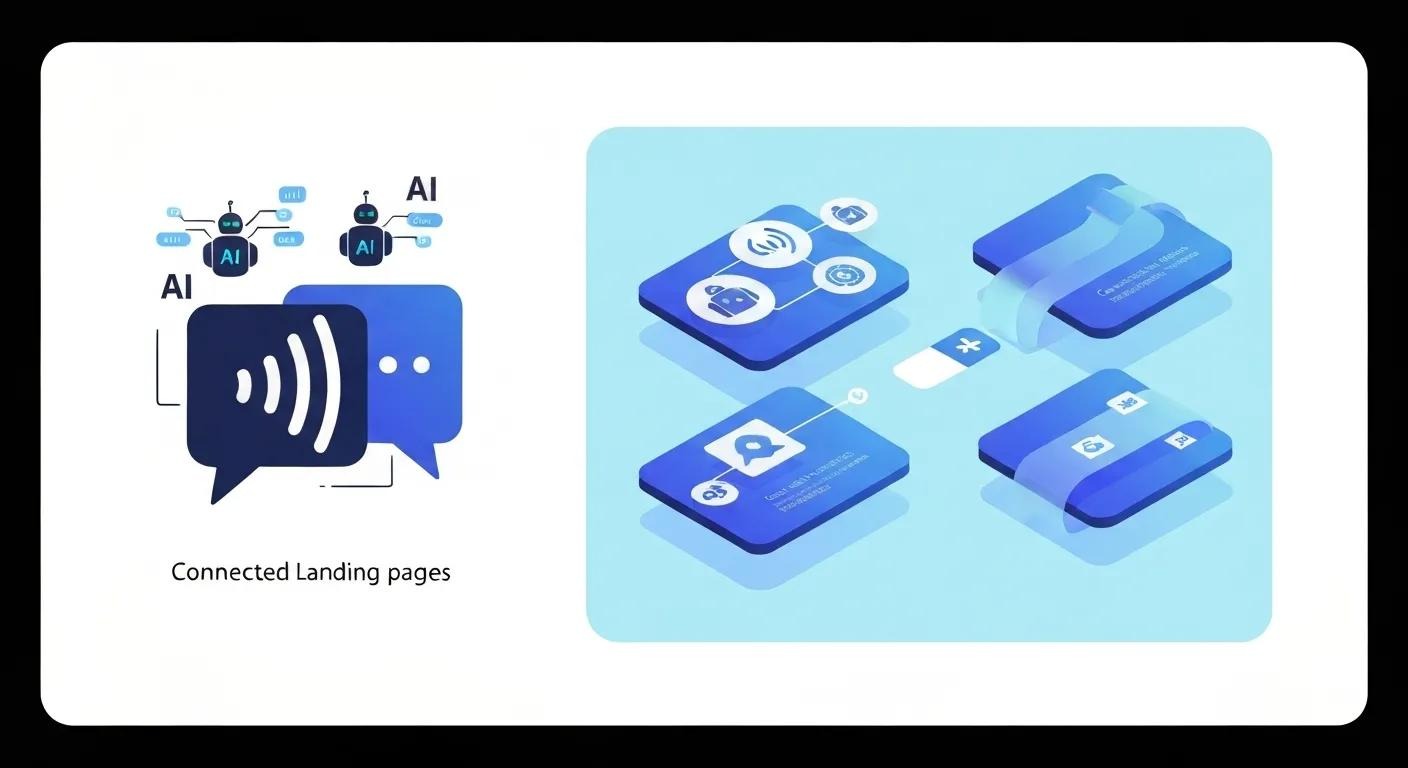
Once foundational SEO elements are in place, SMBs can explore advanced strategies to scale efforts and compete effectively.
Local vs. National Overlap
Understanding your primary audience dictates strategy.
Actionable Advice
- Define Your Primary Market: Local, national, or both?
- Allocate Resources Accordingly:
- Local-first (services): Prioritize GBP, citations, and location pages for “service + city” searches.
- National (e-commerce/SaaS): Broader keywords, content hubs, national authority.
- Hybrid: Local landing pages + evergreen national content (e.g., national CRM trend content + local pages like “CRM software in Austin”).
Common Mistakes to Avoid
- Treating local and national as mutually exclusive
- Creating generic content that serves neither intent well
- Neglecting one market while focusing solely on the other
AI-Driven Content Clustering
Utilize AI tools to pinpoint content gaps and opportunities for comprehensive topic clusters, indicating in-depth expertise. AI can analyze data to find related subtopics that users search for.
Step-by-Step
- Identify Core Topics.
- Use AI for Topic Discovery: SEMrush Topic Research, MarketMuse, etc.
- Analyze Search Intent for Clusters.
- Plan Pillar & Cluster Content.
- Create High-Quality Content: AI-assisted, human-edited.
- Implement Strategic Linking.
Common Mistakes to Avoid
- Relying solely on AI without human review
- Thin or repetitive content
- Misaligned search intent
Programmatic SEO for Scalable Landing Pages
Use data and templates to automatically generate numerous optimized landing pages. Effective for businesses with vast inventory or service areas.
Use Cases
- E-commerce: Product variations
- Travel: City guides
- Real Estate: Property/neighborhood pages
- Service Businesses: Location-specific pages
Benefits
- Scalability and efficiency
- Coverage of long-tail keywords
Considerations
- Technical expertise and data quality
- Maintain unique, high-quality content
- Clear internal linking strategy
Common Mistakes to Avoid
- Generating low-quality/thin content
- Overly similar pages (duplicate risk)
- No clear linking/promotion strategy
Case Study: Local Service Business
A national cleaning service generated thousands of unique, optimized landing pages for “house cleaning services in [city]” across hundreds of cities using a template and database, efficiently capturing local search traffic.
Voice Search & Zero-Click Optimization
Optimize for conversational queries and aim for featured snippets (“position zero”). This involves answering questions directly and concisely.
Step-by-Step
- Identify Question-Based Keywords.
- Structure Content for Answers: Use clear headings, bullets, and concise paragraphs (~40–60 words).
- Use FAQ Schema (FAQPage).
- Optimize for Natural Language.
- Ensure Mobile-Friendliness.
Common Mistakes to Avoid
- Not targeting question-based queries
- Overly long/complex answers
- Ignoring mobile optimization
- No structured data for FAQs
Key Takeaway Advanced tactics enable SMBs to compete effectively by scaling smartly, leveraging technology, and maintaining a strategic focus.
Analytics & KPIs: Measuring SEO Success
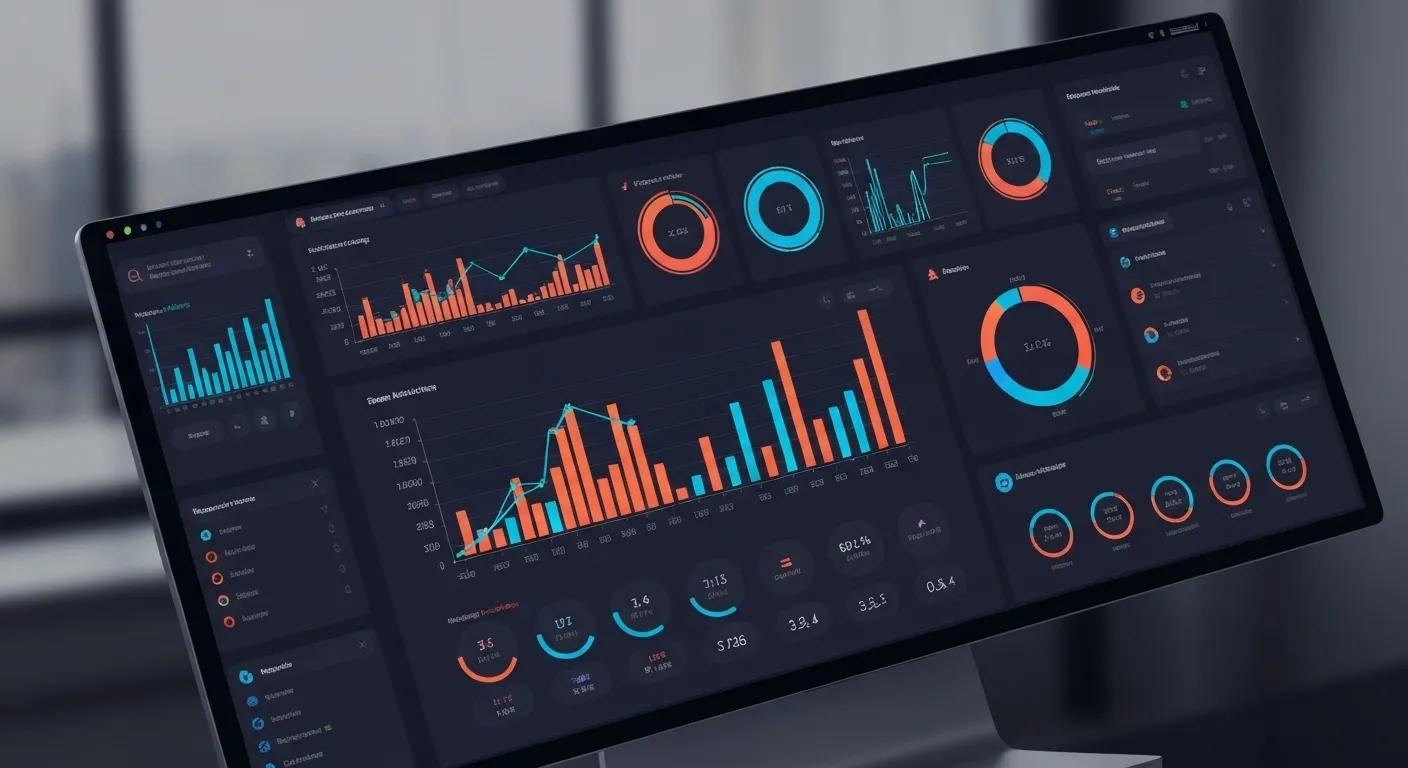
“You can’t manage what you don’t measure.” Tracking the right Key Performance Indicators (KPIs) is crucial for optimizing your SEO strategy and understanding ROI. Focus on metrics that directly impact business goals, moving beyond vanity metrics like rankings alone.
Essential KPIs to Track
- Organic Traffic Growth (Google Analytics):
- How to Track: GA4 → Reports → Acquisition → Traffic acquisition (filter by “Organic Search”).
- What to Look For: Steady increases, growth in key landing page traffic.
- Keyword Rankings & Share of Voice (SOV) (Moz, SEMrush, Ahrefs):
- How to Track: Rank tracking + SOV dashboards.
- What to Look For: Improved rankings for transactional terms, rising SOV.
- Conversion Rate (CR) from Organic Traffic:
- How to Track: GA4 conversion goals, sliced by “Organic Search.”
- What to Look For: Rising CR indicates better-qualified traffic.
- Customer Acquisition Cost (CAC) from SEO:
- How to Calculate: Total SEO Investment ÷ New Customers via SEO.
- What to Look For: Decreasing CAC over time.
- Customer Lifetime Value (LTV) vs. CAC:
- How to Calculate: Avg. Purchase Value × Purchase Frequency × Customer Lifespan.
- What to Look For: Healthy ratio (e.g., 3:1+).
- Bounce Rate & Time on Page:
- How to Track: GA4 Engagement reports.
- What to Look For: Lower bounce, higher time on key pages (context matters).
What Are The Tools for Measurement?
- Google Analytics 4 (GA4): Traffic, behavior, conversions
- Google Search Console (GSC): Performance, queries, and indexing issues
- SEO Platforms: SEMrush, Ahrefs, Moz (competitive analysis, ranks, backlinks, audits)
Key Takeaway SMBs that consistently measure and make data-driven decisions enable continuous improvement, allowing them to out-execute competitors.
Action Plan: Your 12-Month SEO Roadmap
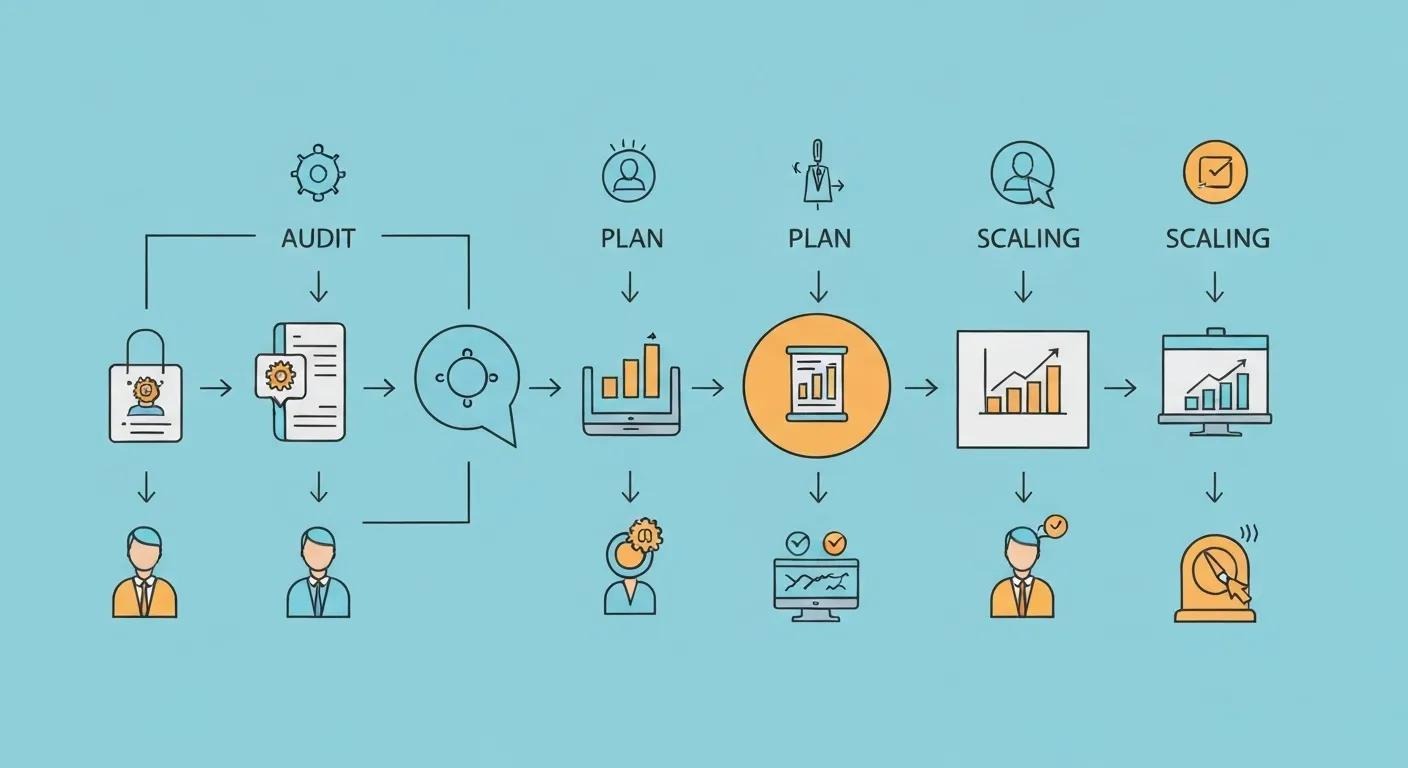
SEO is a marathon. This roadmap provides a phased approach for the first year, focusing on building a strong foundation and then scaling. Consistency and patience are key.
0–30 Days: Audit & Quick Wins
Focus: Foundation & Immediate Improvements
- Conduct a comprehensive SEO audit (technical, on-page, and content).
- Implement quick wins: optimize titles/metas, fix broken links, improve site speed, optimize GBP, and submit XML sitemap.
- Set up GA4 and GSC; verify the site and start data collection.
- Perform initial keyword research.
31–90 Days: Strategy & Content Planning
Focus: Strategic Planning & Content Foundation
- Perform in-depth keyword research; identify user intent and content gaps.
- Develop content strategy and editorial calendar (pillar pages, clusters).
- Optimize existing content based on audit and research.
- Build local citations and encourage reviews.
- Ensure technical SEO foundations are solid.
3–6 Months: Content Creation & Link Building
Focus: Execution & Authority Building
- Consistently publish new, high-quality content per the editorial calendar.
- Launch the first pillar page and supporting cluster articles with strong internal linking.
- Initiate proactive link-building (guest blogging, outreach, PR).
- Monitor rankings and traffic for initial improvements.
- Continue optimizing content and addressing technical issues.
6–12 Months: Scaling & Advanced Tactics
Focus: Optimization, Scaling & ROI Maximization
- Analyze performance data (GA4, GSC) and refine strategies.
- Explore advanced tactics (programmatic SEO, voice search optimization, richer schema).
- Build deeper topical authority and strengthen E-E-A-T.
- Continuously monitor analytics and adjust the roadmap.
- Explore CRO strategies to maximize traffic value.
Key Takeaway Consistent execution of a well-defined plan leads to sustainable SEO growth for SMBs.
Conclusion: SEO as a Growth Flywheel

SEO for small businesses is a powerful, compounding growth engine. Consistent investment in audits, technical SEO, content, local visibility, and authority building achieves lasting online visibility and attracts qualified customers. It’s an investment that pays dividends, building a sustainable asset.
93% of online experiences begin with a search engine (99firms). For SMBs, SEO is one of the smartest, most sustainable long-term investments for growth, leveling the playing field against larger brands.
The 12-month roadmap provides a structured approach, from foundational audits to advanced scaling. By following this plan, SMBs can systematically improve search performance, drive traffic, and achieve business objectives.
Don’t let competitors capture your customers while they’re searching for you. Implement these strategies consistently and watch your business grow. The rewards, sustainable traffic, increased leads, and enhanced brand authority are well worth the effort. By following the 12-Month Growth Roadmap and using the SEO Investment Matrix to stay focused, small businesses can build sustainable visibility that compounds over time.
Get Started with SEO Today!
Need Help to Accelerate Your Growth? Take the first step towards dominating your market online. Let us help you build a robust SEO strategy that drives real business results.
Next Steps: Explore Our Related Guides
About the Author
Jorge Leger is the Founder of Astound Media, a New York–based digital agency specializing in strategic web design and marketing. As a Digital Strategist and Marketing Consultant with over a decade of experience, Jorge leverages his expertise in WordPress, SEO, and automation to partner with mission-driven organizations. He is dedicated to creating results-driven websites and campaigns, with a strong focus on supporting small businesses and nonprofits in growing their online presence. Connect with Jorge on LinkedIn.

